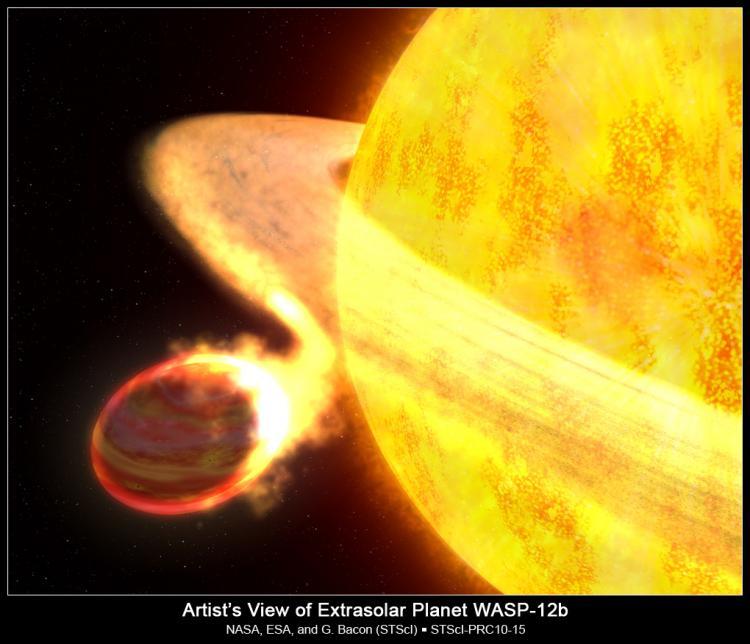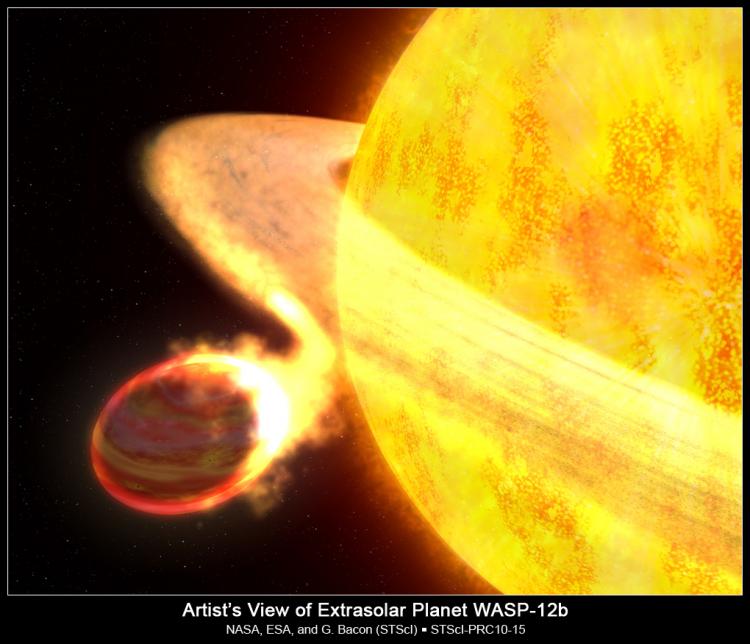The star WASP-12 will finish consuming its planet WASP-12b—one of the hottest known planets in the Milky Way—in 10 million years, NASA has estimated.
WASP-12b is 40 times larger than Jupiter, the largest planet in our solar system, and is being stretched out and melted into the orbital disks of its parent star because of the enormous tidal forces from its superheated parent star.
NASA’s Hubble Space Telescope spotted the phenomenon using some of its latest instruments, which were able to detect the temperature and the speed of the movement. Because it is so close to WASP-12, WASP-12b now orbits WASP-12 in about 1.1 days. It is stretched into a football-like shape due to the strong tidal forces from WASP-12, and is heated to about 2,800 degrees Fahrenheit.
According to the Space Telescope Science Institute, WASP-12 is a yellow dwarf star situated around 600 light-years from Earth, in the winter constellation Auriga.
WASP-12b and its parent star form a unique kind of relationship, which has rarely been seen between a planet and a star.
“We see a huge cloud of material around the planet, which is escaping and will be captured by the star,” said Dr. Carole Haswell of The Open University in Great Britain in a press release.
WASP-12b is 40 times larger than Jupiter, the largest planet in our solar system, and is being stretched out and melted into the orbital disks of its parent star because of the enormous tidal forces from its superheated parent star.
NASA’s Hubble Space Telescope spotted the phenomenon using some of its latest instruments, which were able to detect the temperature and the speed of the movement. Because it is so close to WASP-12, WASP-12b now orbits WASP-12 in about 1.1 days. It is stretched into a football-like shape due to the strong tidal forces from WASP-12, and is heated to about 2,800 degrees Fahrenheit.
According to the Space Telescope Science Institute, WASP-12 is a yellow dwarf star situated around 600 light-years from Earth, in the winter constellation Auriga.
WASP-12b and its parent star form a unique kind of relationship, which has rarely been seen between a planet and a star.
“We see a huge cloud of material around the planet, which is escaping and will be captured by the star,” said Dr. Carole Haswell of The Open University in Great Britain in a press release.






